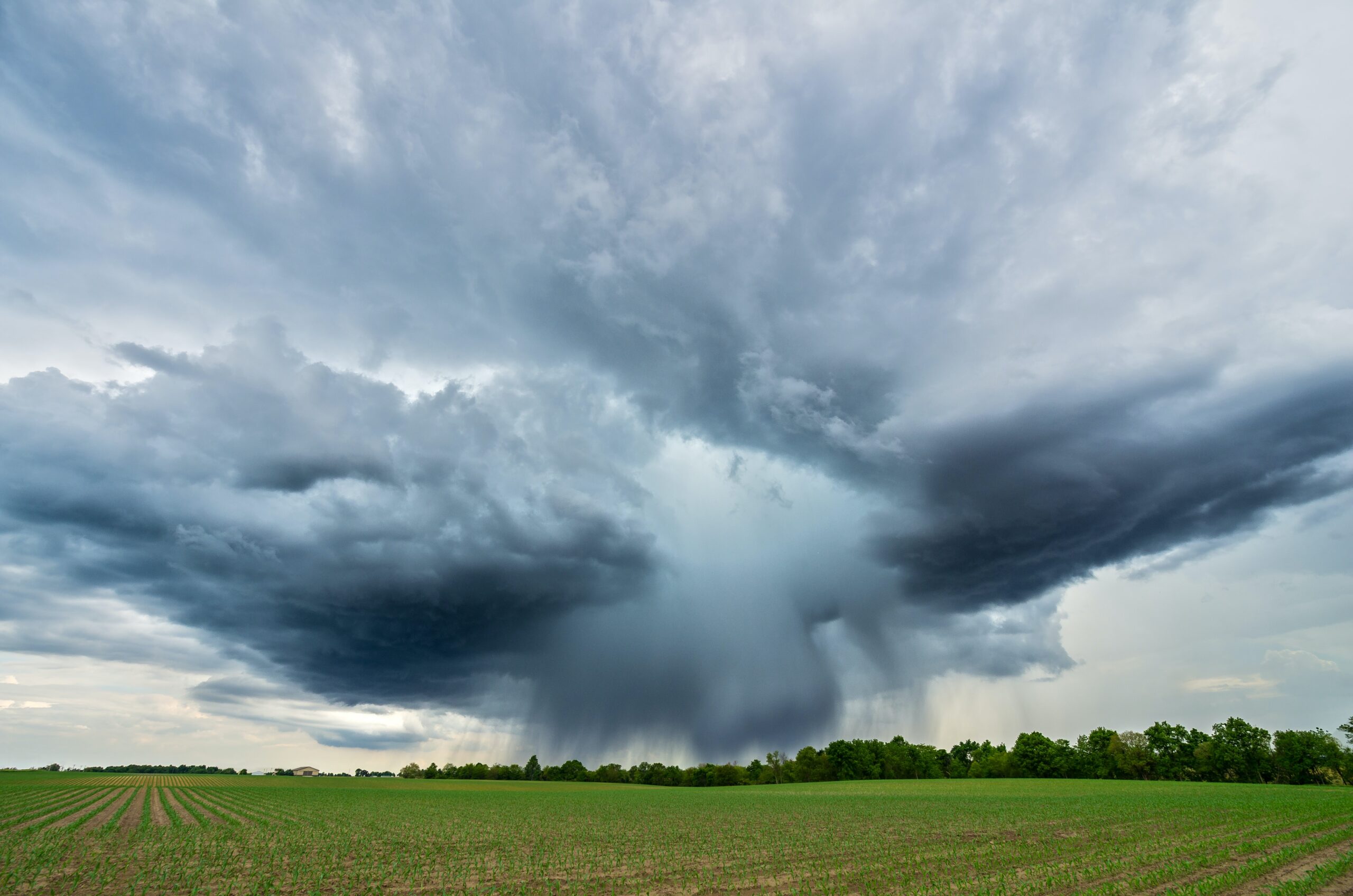Instant Pot What Do The High And Low Pressure Settings Mean: Introduction
In this article, we will be unraveling the mystery of “Instant Pot What Do The High And Low Pressure Settings Mean” which often leave us scratching our heads. Have you ever wondered what those different settings on your Instant Pot mean? Well, wonder no more! We are here to shed some light on the subject and help you understand the significance of these pressure settings. Get ready to decode the secrets behind those buttons and take your cooking game to a whole new level.
Instant Pot What Do The High And Low Pressure Settings Mean?
Instant Pot cooking has become a staple in many kitchens, offering versatility and convenience for a range of dishes. A key feature of this appliance is its pressure cooking function, which comes with two primary settings: HIGH and LOW pressure. Understanding what these settings mean and how they affect your cooking can significantly enhance your Instant Pot experience.
Introduction to Instant Pot Pressure Settings
The Instant Pot revolutionizes home cooking by introducing electric pressure cooking with user-friendly, programmable features. The HIGH and LOW pressure settings are central to its functionality, allowing you to adjust the cooking intensity based on the type of food and the desired outcome.
The Science Behind Pressure Cooking
Before delving into the specifics of the HIGH and LOW pressure settings, it’s essential to understand the basic science of pressure cooking. Pressure cooking works by creating a high-pressure environment inside the pot. This increased pressure raises the boiling point of water, allowing food to cook at a higher temperature than possible with traditional methods, resulting in faster cooking times.

High Pressure Setting on the Instant Pot
Understanding HIGH Pressure
The HIGH pressure setting on the Instant Pot is the most commonly used mode. It cooks food at a higher temperature, typically around 239°F to 244°F (115°C to 118°C). This setting is ideal for a wide range of dishes, especially those that traditionally require longer cooking times.
When to Use HIGH Pressure
- Tough Cuts of Meat: High pressure is perfect for tenderizing tough meats, making them juicy and flavorful.
- Legumes and Beans: Beans and other legumes cook thoroughly and quickly under high pressure.
- Stews and Soups: The high-pressure setting infuses flavors deeply, making it excellent for stews and soups.
Benefits of HIGH Pressure Cooking
- Time Efficiency: This setting significantly reduces cooking time, making it ideal for busy lifestyles.
- Flavor Enhancement: High pressure intensifies flavors, resulting in richer, more robust dishes.
HIGH Pressure Setting on the Instant Pot
The HIGH pressure setting on the Instant Pot is a powerful tool that significantly reduces cooking times and enhances flavors. It’s particularly effective for certain types of foods that benefit from high-temperature, fast cooking. Below are detailed examples of foods best cooked using the HIGH pressure setting, showcasing its versatility and efficiency.
Meats and Poultry
- Beef Stew: Tougher cuts of beef, like chuck roast, become meltingly tender under high pressure. Beef stew, with its hearty vegetables and thick gravy, is a classic dish that benefits from this setting.
- Pulled Pork: Pork shoulder, used for pulled pork, requires long cooking times to break down the connective tissue. The high-pressure setting achieves this in a fraction of the time compared to slow cooking.
- Whole Chicken: Cooking a whole chicken in the Instant Pot on high pressure results in juicy, tender meat that easily shreds off the bone, perfect for soups, salads, or sandwiches.
Legumes and Beans
- Chili: Dried beans like kidney or black beans, often used in chili, cook thoroughly and quickly under high pressure, absorbing the flavors of the spices and seasonings effectively.
- Lentil Soup: Lentils can be cooked rapidly using the high-pressure setting, making them ideal for quick, nutrient-rich soups.
- Chickpeas: For dishes like hummus or chickpea curry, the high-pressure setting cooks dried chickpeas perfectly without the need for pre-soaking.
Grains
- Risotto: While traditionally labor-intensive, risotto can be made effortlessly in the Instant Pot using high pressure, resulting in creamy, al dente rice.
- Quinoa: High pressure cooks quinoa evenly and quickly, making it fluffy and perfect for salads or as a side dish.
Soups and Stews
- Beef Bone Broth: High pressure extracts flavors and nutrients from beef bones efficiently, yielding a rich, nourishing broth.
- Vegetable Soup: Dense vegetables like carrots, potatoes, and turnips cook thoroughly under high pressure, perfect for robust vegetable soups.
Root Vegetables
- Potatoes: Whether you’re making mashed potatoes or potato salad, cooking them under high pressure ensures they are evenly cooked.
- Carrots and Turnips: These root vegetables become tender and flavorful in a fraction of the time it would take to roast or boil them.
Casseroles and One-Pot Meals
- Lasagna: Layered with noodles, cheese, and sauce, lasagna can be cooked as a one-pot meal in the Instant Pot on high pressure, melding the flavors beautifully.
- Chicken and Rice Casserole: Cooking this casserole under high pressure allows the rice to absorb the flavors of the chicken and seasonings, resulting in a comforting meal.
The High pressure setting on the Instant Pot is ideal for a wide variety of dishes, particularly those that are typically time-consuming. It’s perfect for busy days when you want to prepare a nutritious, home-cooked meal without spending hours in the kitchen. By understanding which foods benefit most from this setting, you can use your Instant Pot to its fullest potential, making meal preparation both simple and enjoyable.

Low Pressure Setting on the Instant Pot
Understanding Low Pressure
The LOW pressure setting is a gentler cooking mode, operating at a lower temperature, typically around 229°F to 233°F (109°C to 112°C). This setting is ideal for delicate foods that might be overcooked under high pressure.
When to Use Low Pressure
- Rice and Grains: Delicate grains like rice cook perfectly under low pressure, preventing them from becoming mushy.
- Vegetables: To retain crispness and color, vegetables often require the gentler low-pressure setting.
- Fish and Seafood: The delicate nature of fish and seafood makes them ideal candidates for low-pressure cooking.
Benefits of Low Pressure Cooking
- Preservation of Texture: Low pressure helps in maintaining the texture of delicate foods.
- Nutrient Retention: This gentler cooking method can help retain more nutrients in certain foods.
Low Pressure Setting on the Instant Pot
The Low pressure setting on the Instant Pot is designed for more delicate cooking processes, where a gentle touch is needed to preserve the texture and integrity of certain foods. This setting is particularly useful for dishes that might be overcooked or become too mushy under high pressure. Below is a comprehensive list of food items best cooked using the Low pressure setting in the Instant Pot, emphasizing its importance in preparing a wide range of dishes.
Delicate Vegetables
- Steamed Vegetables: Vegetables like broccoli, asparagus, and green beans, which can easily become overcooked, retain their color, texture, and nutrients when steamed on low pressure.
- Artichokes: Artichokes cook perfectly under low pressure, becoming tender without falling apart.
Eggs
- Hard or Soft Boiled Eggs: Eggs cooked on low pressure are easier to peel and less likely to crack, resulting in perfectly cooked whites and yolks, whether you prefer them hard or soft boiled.
Rice and Grains
- Basmati or Jasmine Rice: These types of rice benefit from the low-pressure setting as it cooks them gently, preserving their delicate flavor and texture.
- Oatmeal: Cooking oatmeal under low pressure prevents it from becoming too dense or burnt, maintaining a creamy consistency.
Fish and Seafood
- Salmon: Salmon steaks or fillets cooked on low pressure remain moist and tender, avoiding the risk of overcooking which can make them dry.
- Shrimp: Low pressure is ideal for cooking shrimp, as it keeps them juicy and tender, preventing a rubbery texture.
Desserts
- Cheesecake: Cheesecake cooked in an Instant Pot on low pressure comes out creamy and evenly cooked, without cracks.
- Custards: Delicate desserts like custard or flan benefit from the gentle heat of low pressure, ensuring a smooth texture without curdling.
Dairy-Based Dishes
- Yogurt: Making yogurt in an Instant Pot is a precise process that requires a gentle and consistent heat, achievable with the low-pressure setting.
- Rice Pudding: Rice pudding cooked on low pressure prevents the rice from breaking down too much, maintaining a creamy yet distinct texture.
Soft Fruits
- Poached Pears: Poaching pears or other soft fruits under low pressure allows them to absorb flavors while retaining their shape and texture.
- Berries Compote: Cooking a berry compote under low pressure ensures that the berries soften while still holding their structure.
“Instant Pot What Do The High And Low Pressure Settings Mean?” This section explains why the Low pressure setting on the Instant Pot is an essential feature for cooking a variety of delicate dishes. This setting ensures that foods which require a gentler cooking process are prepared to perfection, preserving their natural flavors and textures. Understanding how and when to use the low-pressure setting can greatly enhance your cooking experience, allowing you to prepare a diverse range of meals with ease and confidence. Whether you’re cooking a light vegetable side, a delicate seafood main, or a creamy dessert, the Low pressure setting on the Instant Pot is your key to achieving consistently excellent results.

Comparing High and Low Pressure Settings
Understanding the differences between the High and Low pressure settings is crucial for making the most out of your Instant Pot.
Cooking Time
- HIGH Pressure: Cooks food faster, reducing cooking time by about 50-70% compared to traditional methods.
- LOW Pressure: Although slower than high pressure, it still offers a time advantage over standard cooking methods.
Food Quality
- HIGH Pressure: Ideal for achieving tender, flavorful results in meats and dense vegetables.
- LOW Pressure: Better for delicate foods where texture and color are important.
Practical Tips for Using Pressure Settings in the Instant Pot
Understanding and effectively using the pressure settings on your Instant Pot can transform your cooking experience. Here are some practical tips to help you make the most out of these settings:
Knowing Your Ingredients
Characteristics of Ingredients
- Tough Ingredients: Items like beef brisket, pork ribs, or dried beans are ideal for the HIGH pressure setting as it quickly breaks down fibers and softens them.
- Delicate Ingredients: Foods such as fish, eggs, or soft vegetables like spinach should be cooked on LOW pressure to prevent overcooking.
Ingredient Preparation
- Size and Cut: Larger or thicker cuts of meat require more time under high pressure. Conversely, smaller or thinner cuts are better suited for low pressure.
- Soaking Requirements: For beans and legumes, pre-soaking can reduce cooking time, even on high pressure.
Adjusting Recipes for the Instant Pot
Recipe Conversion
- Traditional to Instant Pot: When adapting recipes, consider reducing the liquid content, as the Instant Pot’s sealed environment minimizes evaporation.
- Cooking Time Adjustments: Typically, Instant Pot cooking times are significantly shorter. A good rule of thumb is to start with one-third of the traditional cooking time.
Texture Considerations
- Desired Outcome: For softer textures, like in stews, use high pressure. For dishes where ingredient integrity is key, like in vegetable stir-fries, opt for low pressure.
Advanced Use of Pressure Settings
Combining Settings for Complex Dishes
Staged Cooking
- Multi-Texture Dishes: Begin with high pressure to tenderize tough components, then switch to low pressure to incorporate delicate ingredients like vegetables or seafood.
- Example Dishes: For a beef and vegetable stew, cook the beef on high pressure first, then add the vegetables on a low pressure setting.
Customizing Pressure Levels
Specific Model Features
- Variable Pressure Options: Some Instant Pot models offer settings like ‘Medium’ pressure or allow you to manually set a specific PSI (pounds per square inch), offering more control over the cooking process.
Application
- Fine-Tuning Recipes: Use these nuanced controls to perfect your dishes, especially when dealing with ingredients that are sensitive to pressure variations.
Safety Considerations
Understanding Pressure Release
Release Methods
- Natural Release: Ideal for large or dense foods. It involves letting the pressure drop gradually, which continues cooking the food gently.
- Quick Release: Used for delicate foods. This method releases the steam quickly, stopping the cooking process immediately.
When to Use
- Choose Wisely: Use natural release for meats and legumes to prevent toughness. Quick release is better for vegetables and seafood to avoid overcooking.
Handling the Instant Pot Safely
Lid and Seal
- Proper Sealing: Ensure the sealing ring is properly placed, and the lid is locked securely before starting.
- Visual Checks: Look for signs of wear or damage on the sealing ring regularly, replacing it as needed.
Steam Release Handle
- Correct Positioning: Always check that the steam release handle is in the sealing position when pressure cooking.
- Safety Precautions: When releasing steam, keep hands and face away from the steam vent to avoid burns.
By understanding these nuances and safety aspects of the Instant Pot’s pressure settings, you can harness its full potential to create a wide array of delicious, healthy dishes efficiently and safely. Whether you are a beginner or an experienced user, these tips will help you navigate the versatile world of Instant Pot cooking with confidence and creativity.
Instant Pot What Do The High And Low Pressure Settings Mean: Conclusion
The High and Low pressure settings on the Instant Pot offer unparalleled flexibility in the kitchen, allowing you to cook a wide range of dishes efficiently and deliciously. By understanding and utilizing these settings effectively, you can unleash the full potential of your Instant Pot, making it an indispensable tool in your culinary arsenal.
In conclusion, the Instant Pot’s pressure settings are not just about cooking food faster; they are about optimizing your cooking process to achieve the best possible results. Whether you’re a beginner or an experienced cook, mastering these settings will elevate your cooking and enable you to prepare a variety of dishes with ease and confidence.




